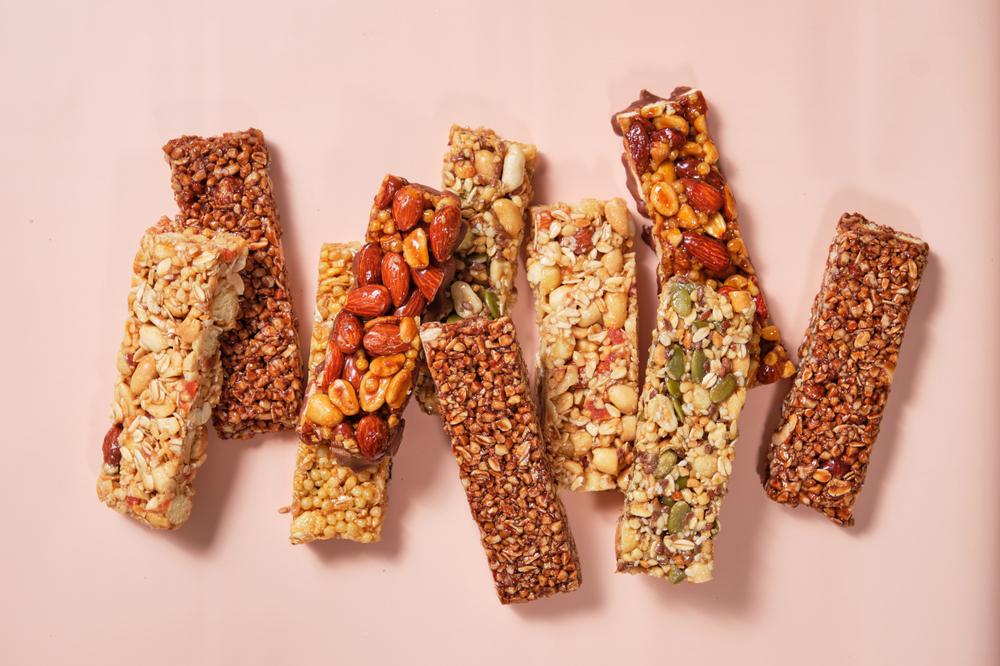 Much like their beloved smartphone or tablet, your athlete has an internal battery—a storage system of energy that’s quickly released into their muscles to help them sprint, jump, lift, and push hard in a race or competition. But like a smartphone’s battery, that storage system can only work for so long before needing to be recharged.
Much like their beloved smartphone or tablet, your athlete has an internal battery—a storage system of energy that’s quickly released into their muscles to help them sprint, jump, lift, and push hard in a race or competition. But like a smartphone’s battery, that storage system can only work for so long before needing to be recharged.
Here, TrueSport Expert Stephanie Miezin, MS, RD, CSSD, the Director of Nutrition for the NWSL team, KC Current, is explaining how your athlete uses their energy stores, and how they can optimize their intake to fuel peak performance.
What is glycogen?
“There is this invisible battery in the muscles, and if your athlete gets to a certain depletion point, they’ll start to fade,” says Miezin. That invisible battery is their glycogen store—fuel stored in their muscles that’s metered out during activity. The more intense the activity, the faster the glycogen is depleted. The longer the duration, the more it depletes. But how can your athlete prevent this from happening? It starts with developing an understanding of how glycogen works.
“For the vast majority of athletes, glycogen is relevant and important. It’s one of the most influential factors in performance,” says Miezin. “This invisible, highly influential thing is behind the scenes for all types of athletes, from endurance to high intensity to team sport athletes. Maximizing glycogen stores could make the difference between winning a game and losing in the final minutes of play.”
“Glycogen is long branch chains of glucose molecules and it’s how we store carbohydrates in the body,” explains Miezin. “We store it primarily in muscles, and lesser amounts are stored in the liver.” The small amount of glycogen in the liver is primarily used to replenish blood glucose. Once your blood glucose—blood sugar—starts to get low, your liver will start to output some glucose from that stored glycogen. The liver breaks the glycogen down in order to create glucose molecules so that the body can maintain a tightly-regulated blood glucose concentration that’s critical for brain function, health, and overall energy. The glycogen that’s stored in your muscles is used differently: It’s a local, immediate source of energy for your working muscles during exercise.
Why does glycogen matter?
“The higher intensity the exercise or the longer the duration, the more the body is using that stored glycogen for energy,” she explains. “If you’re sprinting or doing a long run, you’re using glycogen, but at different rates. For high intensity exercise, it’s depleted faster but for a shorter time. For low intensity exercise, it depletes slower, but if you’re training for a longer duration, those glycogen stores can still get low.”
This is where the battery analogy comes in: Ideally, when your athlete starts an activity, they’re starting at a 100 percent charge. “You charge your phone at night so it’s ready for the next day,” says Miezin. “That’s what happens when you have meals rich in carbohydrates leading up to activity: Your glycogen stores are topped off so that your battery is full when you start your activity.”
 If their battery isn’t fully charged when the athlete starts an activity, they’re going to be limited. “An athlete with a battery that isn’t charged is going to have to stop sooner than someone else who has a fully charged battery,” Miezin says. “When an athlete is in low battery mode, that’s when they’re in trouble. They’ll start to significantly slow down, or enter what endurance athletes call ‘the bonk.‘”
If their battery isn’t fully charged when the athlete starts an activity, they’re going to be limited. “An athlete with a battery that isn’t charged is going to have to stop sooner than someone else who has a fully charged battery,” Miezin says. “When an athlete is in low battery mode, that’s when they’re in trouble. They’ll start to significantly slow down, or enter what endurance athletes call ‘the bonk.‘”
There is a backup generator, of course. Athletes don’t just stop mid-race and fall asleep because their glycogen gets too low. “The body is incredible, and we have these different engines and different types of fuel that feed each engine to create power,” Miezin says. “But carbohydrates in the form of glycogen are the most powerful and the fastest burning. If we run out of that, or if our depletion gets to a certain level, then we have to start switching over to the other fuel source and engine, and that’s where fuel from fats comes in. Those are important, but they just burn slower and lower. And so an athlete is going to feel that in their performance.”
If an athlete’s glycogen stores are dropping, they’ll start to feel their mental and/or physical energy starting to fade. If their battery is refilled properly—with appropriate carbohydrates before, during, and after exercise—they’ll have more steady energy, and likely won’t be as sore or tired post-exercise. And a fully charged session tends to lead to another fully charged session: It’s easier to recover from one workout to the next when fueling appropriately. (Think of it as charging a phone battery that’s at 50 percent versus one that’s at five percent. The 50 percent drained battery takes less time to recharge.)
How to recharge the battery
“There’s not an easy, straightforward answer about the best way to recharge depleted glycogen stores after exercise,” says Miezin. “It depends on how much the athlete depleted their battery. For example, researchers found that in certain soccer situations, post-game it can take two to three days of adequate carbohydrate eating throughout the day to replenish what players lost in glycogen in that one soccer game. It’s not just one big meal after the game that recharges the athlete. Players need to replenish and refuel for multiple days. By comparison, a sprinter who is doing high intensity but much shorter durations won’t have depleted their glycogen to the same extent as the soccer player, and won’t necessarily need the same amount of carbohydrates to fully replenish that battery. Regardless of the sport, it’s always a good idea to focus on higher carb meals and snacks in the 24 hours after training or competition to refuel and recharge as much as possible.”
For caregivers, the best approach is to ensure that active young athletes are using the Athlete Plate model at most meals, prioritizing higher carbohydrate meals and foods in and around exercise, and never restricting carbohydrates at any meal because carbohydrates are the only way to refill glycogen stores.
Everyone’s battery is different
“It is so complicated, and we’re still learning more about glycogen and how exactly it works,” says Miezin. “We know glycogen stores and the utilization are affected by the individual, type of activity, duration, and many other factors. There’s a lot we still have to learn. So, it’s less about understanding exactly how drained your athlete’s battery is and more about making sure they have the tools that they need to recharge on and off the field.”
Finally, it’s important to remember that athletes’ batteries drain at different rates—your athlete may be eating the exact same snacks and meals as their teammate but struggling while their teammate feels fully recharged. Miezin recommends helping your athlete keep a journal of meals/snacks before, during, and after exercise so they can track that against energy patterns. Do certain snacks or meals help your athlete feel more energized during exercise? Becoming aware of how fuel and hydration impact feeling and performance can be a powerful motivator to improve fueling habits.
___________________________
Takeaway
Glycogen stores are the athlete’s battery. Glycogen feeds the muscles that are being used during exercise, and it drains based on intensity and duration of exercise. Because glycogen is the body’s stored form of carbohydrates, it’s important that athletes refill those stores by prioritizing carbohydrates at meals before and after exercise, and by using carbohydrates as fuel during exercise as needed.



